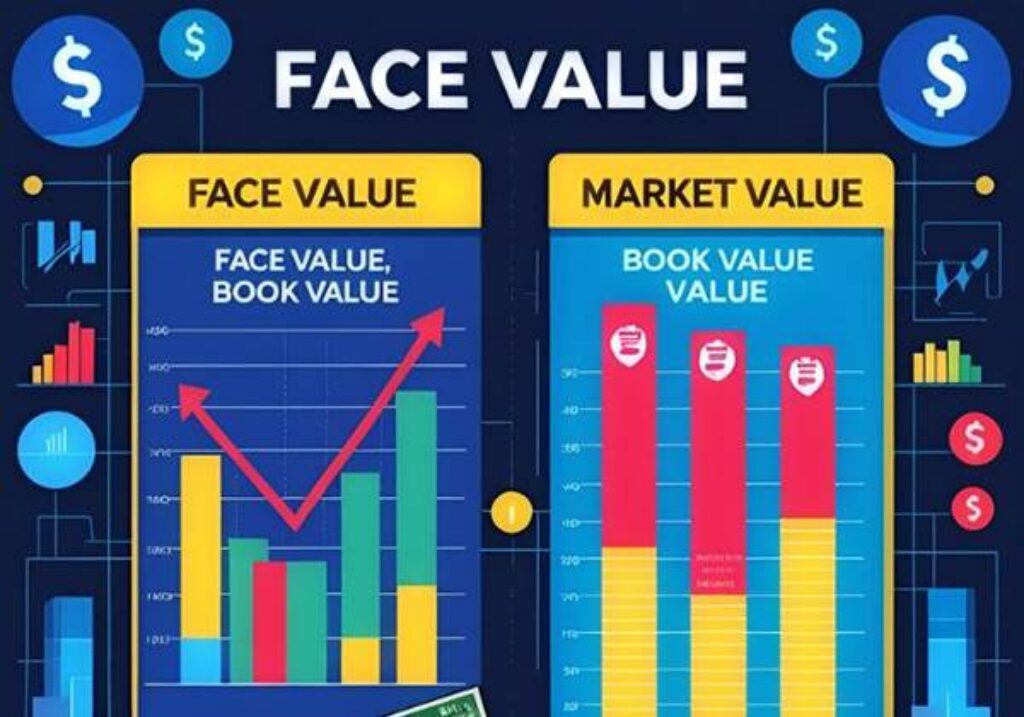Face Value vs Book Value vs Market Value: Explained with Examples
Introduction
When you’re analyzing a stock for investment, you’ll often hear terms like face value, book value, and market value. While they may sound similar, each serves a unique purpose in understanding a company’s worth. In this tutorial, we’ll explain these concepts in simple terms with examples.

1. What is Face Value?
Definition:
Face Value (or Par Value) is the nominal value of a share as assigned by the company. It is mentioned in the company’s books and remains unchanged.
Example:
If a company issues shares at ₹10, that’s its face value — regardless of its trading price.
Why It Matters:
- Used to calculate dividends.
- Helps in stock splits or bonus shares.
- Affects accounting, but not a measure of a company’s real worth.
2. What is Book Value?
Definition:
Book Value is the value of the company’s assets minus liabilities, divided by the total number of shares. It represents the net asset value per share.
Formula:
Book Value per Share = (Total Assets – Total Liabilities) / Number of Shares
Example:
If a company has ₹50 crore in net assets and 10 crore outstanding shares:
Book Value = ₹50 crore / 10 crore = ₹5 per share
Why It Matters:
- Used in fundamental analysis.
- Helps investors find undervalued stocks.
- If Market Value < Book Value → might be undervalued.
3. What is Market Value?
Definition:
Market Value is the current price at which the stock is trading on the stock exchange.
Example:
If a company’s share is trading at ₹80, that’s the market value — regardless of its face or book value.
Why It Matters:
- Reflects what investors are willing to pay.
- Fluctuates daily based on demand, performance, news, etc.
- Shows investor confidence.
Comparison Table:
| Term | Represents | Set By | Changes? | Purpose |
|---|---|---|---|---|
| Face Value | Nominal Value of Share | Company | No | Accounting, splits, dividends |
| Book Value | Net Asset Value per Share | Financial Books | Periodically | Fundamental Analysis |
| Market Value | Current Price on Stock Market | Market Forces | Daily | Real-time Valuation |
Real-World Example:
Let’s take ABC Ltd.
- Face Value: ₹10
- Book Value: ₹60
- Market Value: ₹150
Here, Market Value is 2.5 times Book Value → possibly overvalued or growth stock.
If Market Value < Book Value → it could be undervalued.
Key Takeaways:
- Face Value is used in company accounting and does not reflect actual worth.
- Book Value helps understand the net worth of a company.
- Market Value reflects real-time investor sentiment and pricing.







